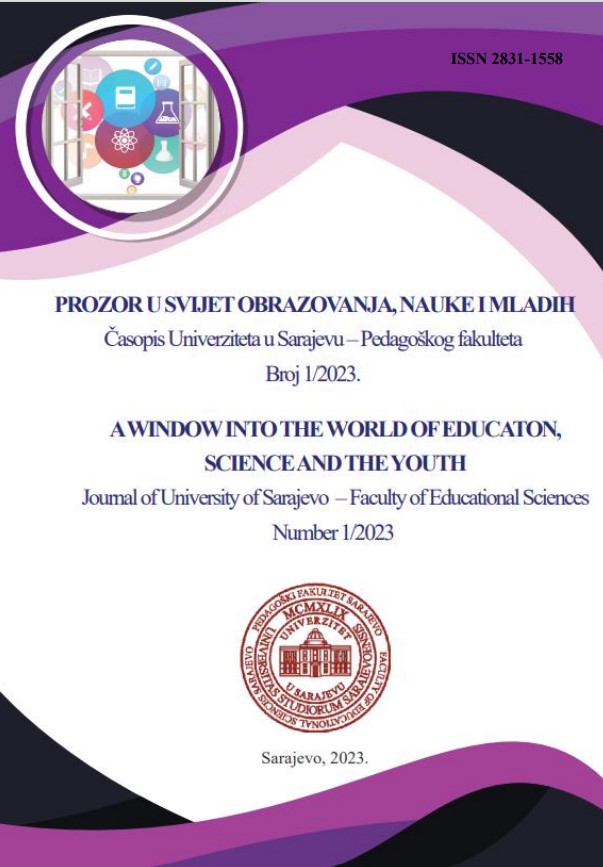Kompetencije učitelja primarnog obrazovanja za praćenje posturalnog statusa učenika
Competences of primary education teachers for monitoring the postural status of the students
Author(s): Elvira NikšićSubject(s): Social Sciences, Education, School education, Higher Education
Published by: UNIVERZITET U SARAJEVU – PEDAGOŠKI FAKULTET
Keywords: body posture; posture; competencies; teachers; class teaching;
Summary/Abstract: Among the many competencies that a modern teacher must possess, the competency to monitor postural status is extremely important for children's proper growth and development and the prevention of physical deformities. This research aims to examine and determine the competence of primary education teachers in monitoring the postural status of students. The research was conducted on a sample of N=148 teachers/professors of classroom teaching and N=1105 students of classroom teaching. To obtain reliable (relevant) data, the sample of respondents was taken from the population of 15 different schools in Sarajevo Canton. For the research, a survey questionnaire was constructed for examining teachers. The survey questionnaire was anonymous and contained 10 questions or items. A 5-point Likert rating scale was used. Diagnosing the state of body posture in primary school students was carried out according to the criteria of Napoleon Wolanski (1975), which are based on the determination of segmental dimensions in mutual relations, as follows: D1 - head posture (ODG), D2 - shoulder posture (ODR), D3 - chest posture (ODGR), D4 - shoulder blade posture (ODL), D5 - spine posture (ODK), D6 - abdominal posture (ODTR), D7 - leg posture (ODN), D8 - foot posture (ODS). Deviations are classified according to their size, and they are evaluated with so-called negative points, whereby: 0 points - indicate no deviation, 1 point - indicates a slight deviation, and 2 points - indicate a significant deviation. The number of points for the assessment of body 568posture ranged from 0 points as a minimum to 16 points as a maximum. Excellent posture (0 points), very good (from 1 to 4 points), good (from 5 to 8 points), poor (from 9 to 12 points), and very bad (from 13 to 16 points). All data collected through the research were processed using descriptive statistics procedures. Frequencies and percentages, arithmetic mean, standard deviation, and Chi-squares were calculated from the space of descriptive statistics. The statistical program for personal computers SPSS for Windows version 20.0 was used for data processing. The obtained results indicate that teachers are not sufficiently educated about posture and its monitoring in classroom students. They do not have a real picture of the improper posture of their students and do not use most of the props in physical and health education classes to prevent and correct improper posture and body deformities. They do not have enough knowledge about postural muscles either, which indicates the need for additional education on the mentioned topic, so that teachers can work on strengthening weakened musculature and postural muscles, and therefore also on the prevention and correction of postural disorders. A large number of teachers stated that there are no children with improper posture and physical deformities, which is contrary to the results obtained from testing and measuring students. Based on the measurements carried out among the pupils of the class with whom the above-mentioned interviewed teachers work, it can be concluded that improper posture and physical deformities are present in every school, class, and department. Each deformity is present in a certain percentage when it comes to students from I to V grades of elementary school. The most common deformities are foot and spine deformities, which are a consequence of today's sedentary lifestyle and improper posture. Most teachers believe that they are not sufficiently educated and capable of working on the prevention and correction of improper posture and physical deformities with students in class. The obtained results indicate that teachers are not competent enough to monitor the postural status of primary school students, which necessitates the need for additional education, seminars, conferences, and workshops for more serious dealing with the posture of primary school students.
Journal: Prozor u svijet obrazovanja, nauke i mladih
- Issue Year: 2023
- Issue No: 1
- Page Range: 539-596
- Page Count: 58
- Language: Bosnian, English

